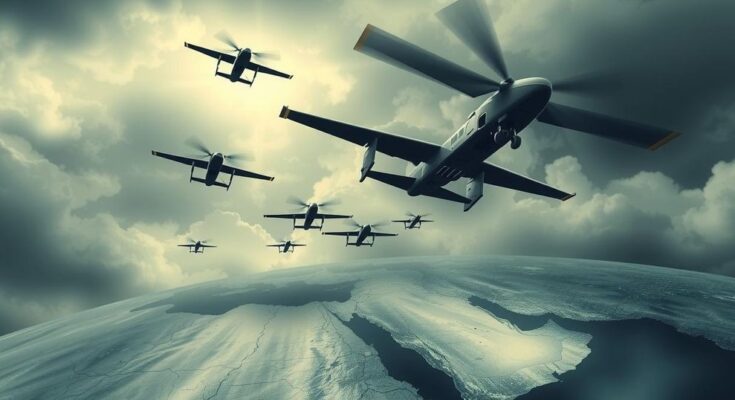Russia is advancing in drone warfare as seen in the Kursk battle, where its use of drones has shifted the military balance. This development holds implications for Iranian-backed groups targeting Israel, particularly following recent conflicts. Understanding Russia’s tactics can inform defensive strategies among technologically advanced militaries like Israel.
Russia appears poised to outpace Ukraine in drone warfare, particularly highlighted by the recent BBC article detailing Ukraine’s retreat from the Kursk battlefield. After holding this critical region since August 2024, Ukraine’s forces faced a major setback as Russian drones significantly contributed to their withdrawal, illustrating Russia’s evolving capabilities with drone technology developed since the war’s onset.
The utilization of Iranian Shahed kamikaze drones by Russia in their offensive is noteworthy, as it sets a precedent for drone warfare seen among Iranian-backed groups in the Middle East, notably post the Hamas attack on October 7. Reports indicate that this technology’s effects are not isolated to Ukraine but carry implications for escalating tensions in the Middle East. Furthermore, recent findings from Conflict Armament Research suggest the Houthis are innovating with hydrogen fuel cells to enhance their drone operations.
The BBC analysis from the Kursk front reveals critical military tactics that Ukraine struggled against, as they deployed approximately 12,000 soldiers while Russia mobilized tens of thousands, effectively cutting off Ukrainian advances. This scenario mirrors historical military challenges faced, particularly the withdrawal of the Iraqi army from Kuwait, where logistic routes became compromised.
Remarkably, Russian tactics, including deploying specialized drone units, enabled them to gain control over critical supply lines, targeting Ukrainian logistics through advanced drone technologies. Ukrainian soldiers corroborated the strategic advantage possessed by Russian forces, particularly concerning first-person-view (FPV) drones which heightened their operational efficiency and strike accuracy.
The report asserts that Russia’s strategy encompassed utilizing drone swarms to monitor and attack military assets continuously, a methodological advance seen previously in conflicts such as those between Azerbaijan and Armenia. Assertions from soldiers indicate an overwhelming drone presence, with consistent threats to logistic routes, further emphasizing the shift in warfare dynamics.
The increasing importance of drone technology and countermeasures marks a turning point in military strategy. The implications of the Kursk battle extend beyond Ukraine, serving as critical lessons for technologically advanced militaries like Israel, particularly in light of Hamas’s recent drone engagement strategies. Russia’s adaptive learning in drone warfare could inform future confrontations in the region, necessitating vigilant readiness from nations like Israel.
In conclusion, the evolving landscape of drone warfare exemplified in the Kursk conflict underscores the strategic lessons for militaries worldwide, particularly regarding logistics and technological advancements. Russia’s utilization of drones illustrates significant shifts in military capabilities that may influence future engagements in the Middle East. As drone warfare becomes increasingly central to military operations, states must remain alert to adapt their strategies accordingly.
Original Source: www.jpost.com




